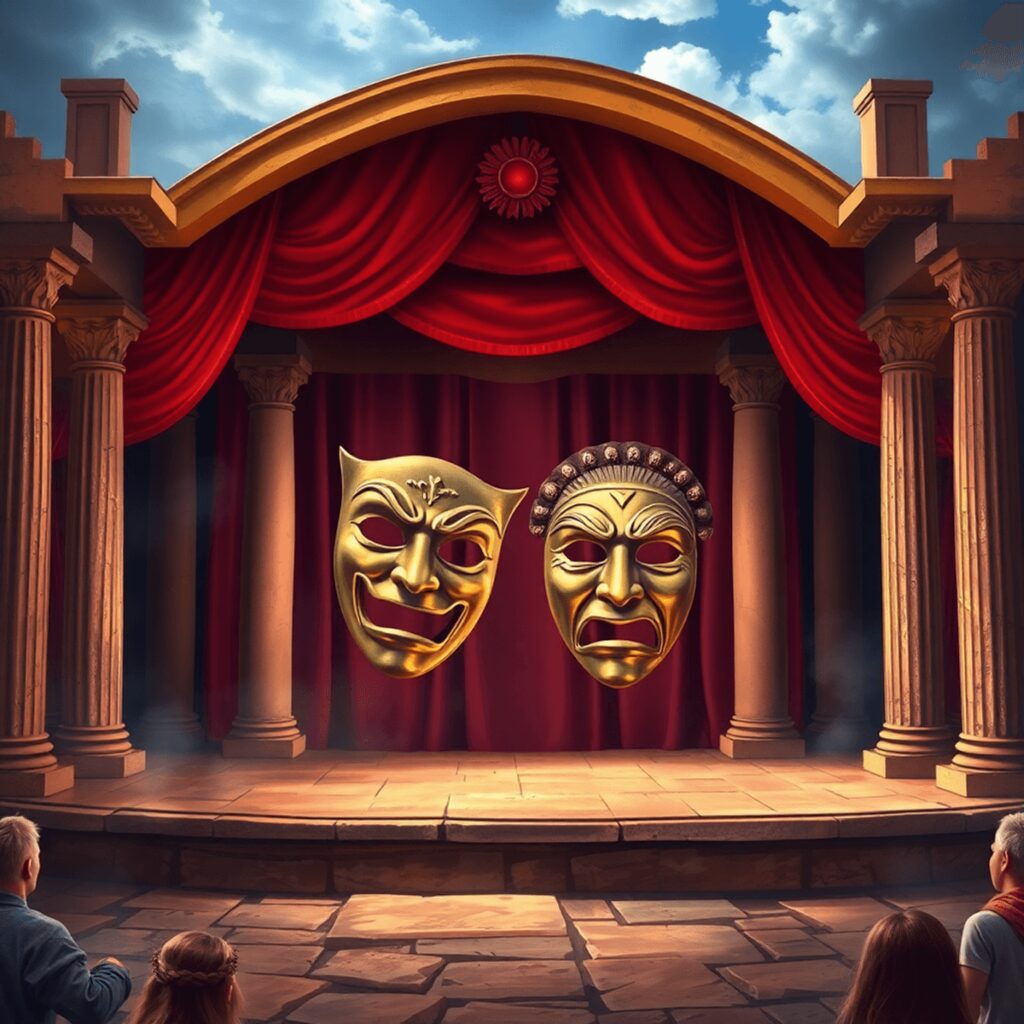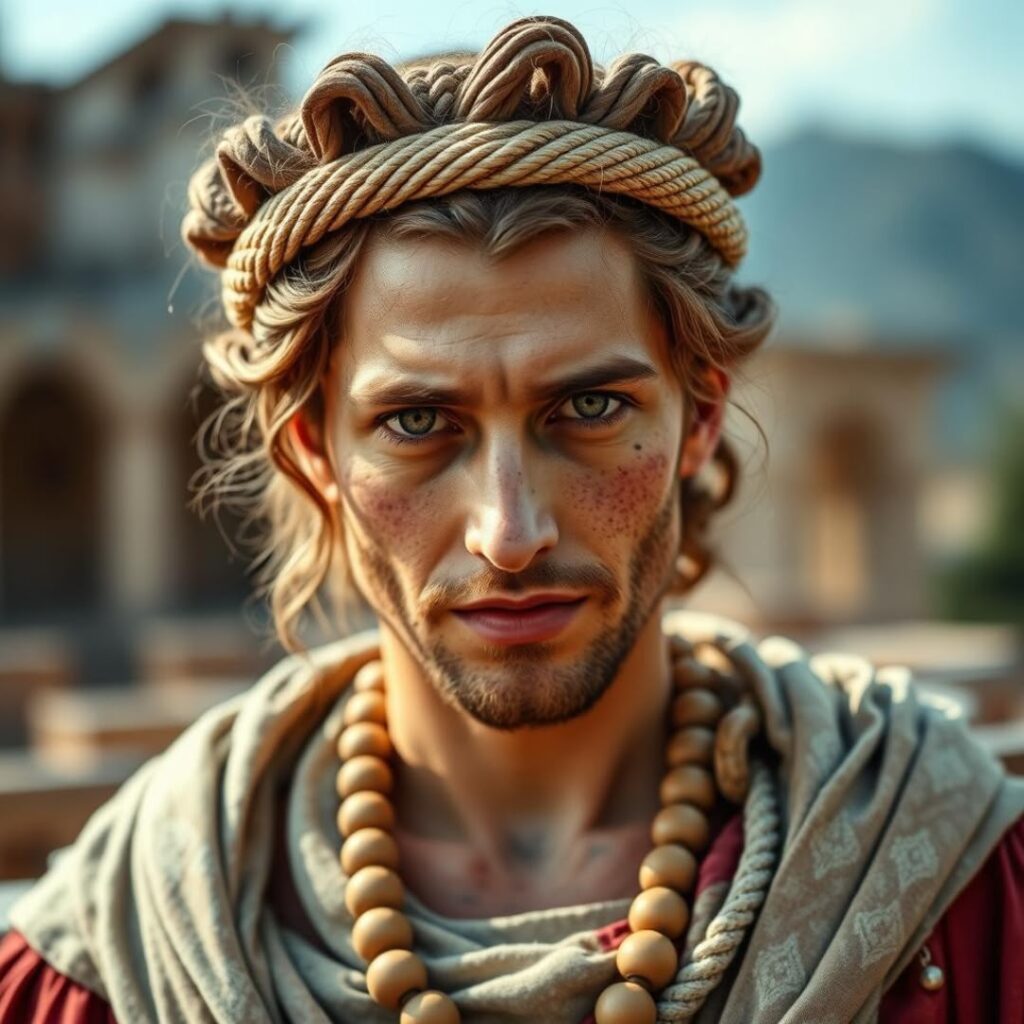Theatrical performances in ancient Rome were a vital aspect of cultural life, showcasing the vibrant interplay between comedy and tragedy. This article delves into the evolution of Roman theatre, highlighting key themes that shaped its development.
Understanding the cultural significance of Roman theatre is essential for recognizing its impact on the evolution of theatrical art forms.
Roman performances were not merely entertainment; they reflected social dynamics, moral dilemmas, and public sentiment. By exploring the comedic wit of Plautus and Terence alongside the profound tragedies of Seneca, you will gain insight into how these works resonate with contemporary audiences.
The legacy of Roman theatre continues to influence modern performance practices, making an examination of its historical context invaluable. Engaging with this rich tradition allows you to appreciate the foundations that have shaped theatrical narratives through the ages.
To truly grasp the essence of this remarkable period, one must also explore Ancient Rome, a civilization that thrived from 753 BC to 476 AD, marked by innovation, culture, and governance. Furthermore, understanding the role of infrastructure such as Roman roads can provide additional insights into how these elements supported and expanded the empire’s cultural reach.

Historical Context of Roman Theatre
The origins of Roman theatre can be traced back to the 4th century BCE, with significant influences stemming from Etruscan and Greek traditions. Etruscan performances, characterized by their religious rituals and festive celebrations, laid the groundwork for theatrical expressions in Rome. These early influences were further enriched by the arrival of Greek theatre, which provided a structured approach to dramatic storytelling.
Key milestones in the development of Roman drama include:
Livius Andronicus (240 BCE): He is often credited with staging the first Greek plays in Latin, marking a pivotal moment in Roman literary history. His adaptations not only introduced Greek themes but also shaped the linguistic style of subsequent Roman playwrights.
Gnaeus Naevius: Another influential figure in early Roman theatre, he contributed significantly to the establishment of theatrical forms. Naevius differentiated himself by creating original works that incorporated Roman themes and characters while drawing inspiration from Greek models.
The blending of these cultural influences resulted in a unique theatrical landscape where genres began to take shape. The incorporation of local myths and societal issues into performances allowed for a reflection of contemporary life in Rome, distinguishing it from its Greek predecessors.
As Roman theatre evolved, it started to embrace both tragedy and comedy, although the latter gained more popularity among audiences. This shift highlighted an essential aspect of Roman culture—entertainment was paramount, often overshadowing the more somber tones found within tragic narratives.
However, to fully appreciate this vibrant art form, one must consider the broader historical context of ancient Rome. This period was marked by significant events such as the birth of the Roman Republic, which marked a critical shift from monarchical rule to a republican system around 509 BCE. This transition played a crucial role in shaping the complexities of Roman governance, establishing key principles that resonate in modern political structures.
Simultaneously, the Twelve Tables, created between 451-450 BCE, represented a significant milestone in the development of Roman law. These laws were the first attempt to codify the complex and often arbitrary legal practices of ancient Rome.
Moreover, agriculture during this era was not just about sustenance; it was a crucial driver of Rome’s economic and social development.
Understanding these historical elements provides deeper insights into how ancient Rome adapted and transformed existing theatrical traditions into a vibrant art form that would influence generations to come. For those interested in exploring more about this fascinating world, Men of Pompeii offers an ultimate online resource dedicated to bringing the past to life. Additionally, you can explore more
Genres of Roman Theatre: Tragedy and Comedy
Roman theatre showcased a rich tapestry of genres, prominently featuring tragedy and comedy. Each genre offered distinct characteristics and themes that reflected the complexities of human experience.
Tragedy in Roman Theatre
Seneca the Younger stands as the most significant figure in Roman tragedy, with his works deeply exploring tragic themes such as fate, revenge, and moral dilemmas.
His tragedies are marked by:
- Intense emotional conflict
- Philosophical reflections on human nature
- A focus on the darker aspects of existence
Notable plays like Phaedra and Thyestes exemplify these elements, delving into themes of passion, betrayal, and the consequences of power. Seneca’s influence extends beyond mere storytelling; his rhetorical style and vivid imagery have shaped later theatrical traditions.
Comedy in Roman Theatre
In contrast, comedy flourished through playwrights like Plautus and Terence, who masterfully crafted humorous narratives filled with relatable characters. Their works are characterized by:
- Common tropes including mistaken identities, love entanglements, and clever servants.
- Stock characters that became staples in comedic storytelling:
- Adulescens: the young lover often caught in romantic misadventures.
- Senex: the old man representing authority or foolishness.
- Miles gloriosus: the braggart soldier whose bravado often leads to comedic mishaps.
The comedic narratives often served as social commentary, reflecting the societal norms and values of Roman life. For instance, Plautus used humor to critique social hierarchies while Terence focused on personal relationships, showcasing a more refined approach to comedy.
Through these genres, Roman theatre not only entertained but also provided insight into moral questions and societal dynamics, engaging audiences on multiple levels. The interplay between tragedy’s somber themes and comedy’s light-heartedness underscores the diverse expressions of human emotion within this vibrant cultural landscape.
Theatrical Performance as a Spectacle in Ancient Rome
Theatre played an important role in public festivals and celebrations in ancient Rome. These grand events captivated audiences, blending various forms of entertainment including:
- Acrobatics
- Mime
- Dramatic performances
The theatrical spectacles were designed to engage spectators fully. Performers utilized elaborate costumes, vibrant settings, and dynamic movements to create an immersive experience that resonated with viewers.
Audience engagement was paramount. The interactive nature of these performances encouraged spectators to react, laugh, and sometimes even participate. This connection between performers and the crowd fostered a lively atmosphere that defined Roman entertainment culture.
Theatrical productions often coincided with religious festivals, enhancing their significance within society. Events such as the Ludi Romani featured theatrical plays that celebrated the gods while entertaining the masses.
This blend of spirituality and entertainment illustrates how theatrical performances in Rome transcended mere storytelling; they became essential components of communal life. The excitement surrounding these spectacles laid the groundwork for future developments in performance art, influencing how theatre evolved beyond its Roman roots into contemporary practices.
However, it’s important to note that theatre was just one aspect of the broader spectacle of ancient Rome, which also included gladiatorial games and chariot races. These events were not only entertaining but also played a crucial role in shaping social relationships and political authority within Roman society.
Moreover, the portrayal of figures like gladiators in these spectacles raises interesting questions about their role in Roman entertainment. Were they merely victims of a brutal system or did they achieve a status akin to heroes? This is a topic worth exploring further in the context of gladiatorial games which were another significant aspect of the Roman entertainment landscape.
In addition to academic pursuits related to this rich history, some individuals have found ways to immerse themselves in this past through modern technology. For instance, role-playing games like Second Life allow users to step into virtual worlds that replicate historical contexts such as ancient Rome, providing a unique way to engage with this fascinating period.

Architectural Influence on Roman Theatres: From Greek Designs to Audience Experience
The architecture of Roman theatres, a testament to Roman Architecture: Masterpieces of Ancient Engineering, was profoundly shaped by earlier Greek designs. This resulted in a distinctive style that catered to the needs of larger audiences and improved sound acoustics. Key architectural features include:
Semicircular Seating: This design maximized visibility for spectators. Rows of seats arranged in a semi-circle allowed attendees to have an unobstructed view of the stage.
Elevated Stages: The elevation of stages enhanced the audience’s experience by improving sightlines. This adaptation enabled actors to be seen more clearly, even from the back rows.
Notable examples illustrate these architectural innovations:
Theatre of Pompey: Built in 55 BCE, this permanent stone theatre was one of the first large-scale constructions in Rome. It featured a grand stage with elaborate decorations, accommodating thousands of spectators. Its design included a semi-circular orchestra and an extensive seating area.
Theatre of Marcellus: Completed in 13 BCE, this theatre combined both Greek and Roman elements. It showcased a grand façade featuring three tiers of arches, demonstrating how Roman architecture evolved while maintaining Greek influences.
These architectural advancements significantly enhanced the theatrical experience for audiences. The combination of strategic design and innovative construction techniques ensured that performances were not only entertaining but also immersive, allowing audiences to engage with the spectacle fully. Such architectural grandeur is reflective of the broader influence of Roman mythology on modern culture, which continues to resonate today.
Social Aspects of Roman Theatre: Actors’ Status and Societal Perceptions
The world of Roman theatre was marked by a distinct social hierarchy, particularly regarding the status of actors. Many performers came from the lower classes or were slaves, which significantly influenced their reputation in society. This background often led to a perception that actors were untrustworthy or morally questionable.
1. Social Class Background
- Most actors were not free citizens. Their involvement in theatre was often a means of survival, reflecting the broader social class divide in ancient Rome.
- Few actors managed to rise above their social standing, gaining fame and respect over time.
2. Perceptions and Stigma
- Roman society held a negative view towards actors, considering them akin to criminals and outcasts. This disdain for actors is well-documented, with various sources highlighting the societal aversion towards this profession, as seen in discussions on platforms like Reddit where users delve into the reasons behind this hatred for actors.
- In contrast, Greek performers enjoyed higher status and respect, largely due to the cultural significance of Greek theatre.
While some individual Roman actors achieved celebrity status, the broader societal perception remained skeptical. The stigma surrounding actors not only reflected class distinctions but also highlighted the tension between entertainment and moral values in ancient Rome. This complex dynamic shaped the theatrical landscape, influencing both performances and audience engagement.
Moreover, it’s essential to understand that this stigma was not limited to actors alone. It extended to other professions as well, particularly those associated with lower social standing like the plebeians. These common people comprised a diverse group who were vital to the fabric of Roman society yet faced significant societal prejudice.
In stark contrast stood the patricians, the wealthy and powerful elite of ancient Rome. Their lifestyle was characterized by luxury and power, further emphasizing the stark social divide.
This complex interplay of social classes was also reflected in the legal status of individuals within these classes. For instance, understanding the legal status of Roman women reveals a complex interplay of rights and restrictions that significantly influenced gender dynamics in ancient Rome.
Cultural Impact and Legacy: Hellenistic Influences on Roman Theatre Practices
The evolution of Roman theatre was significantly shaped by the fusion of local traditions with Hellenistic elements. This melding created a unique identity for Roman theatrical practices, setting them apart from their Greek predecessors.
1. Local Traditions
Early Roman performances were deeply rooted in Etruscan customs, emphasizing rituals and ceremonies. These local elements provided a foundation upon which Hellenistic influences expanded.
2. Hellenistic Elements
The introduction of Greek plays into Latin by figures like Livius Andronicus marked a pivotal shift. The incorporation of sophisticated themes, character development, and narrative structures from Greek drama enriched Roman theatrical content.
Key Aspects of Influence
- Adaptation of Themes: Roman playwrights often mirrored Greek narratives while infusing them with local societal issues, reflecting the complexities of Roman life.
- Character Development: The transition towards more intricate characters allowed for deeper exploration of human emotions and moral dilemmas, particularly prominent in tragedies.
- Performance Style: The grandeur typical of Hellenistic theatre influenced staging techniques in Rome, leading to spectacular displays that captivated audiences.
The legacy of Roman theatre extends far beyond its time. Its impact on Western theatrical developments is profound, as highlighted in this overview of how Ancient Rome shaped Western civilization.
- Foundational Structures: The architectural innovations seen in Roman theatres laid the groundwork for modern venues, influencing design principles that prioritize audience engagement.
- Literary Contributions: Works from Seneca, Plautus, and Terence serve as vital references in the study of drama, inspiring countless playwrights throughout history.
This blend of local and Hellenistic influences not only defined Roman theatre but also ensured its enduring relevance within the broader context of global theatrical traditions. Understanding these cultural dynamics enhances appreciation for contemporary performances that draw from this rich historical backdrop.
Furthermore, the influence of Roman culture extends beyond theatre, affecting various aspects such as religion as explored in this detailed examination or the political landscape during its rise and fall detailed in this historical overview. Each facet contributes to a comprehensive understanding of how Greek philosophy shaped Roman thought, as well as how military might influenced its expansion as discussed in this article about the role of the Roman Army.
Conclusion: The Enduring Relevance of Roman Theatrical Performances from Comedy to Tragedy
Understanding the theatrical performances in Rome provides crucial insights into contemporary theatre practices. The evolution from comedy to tragedy reflects not only artistic growth but also societal values and cultural shifts.
Key points to consider:
Roots of Modern Theatre: Roman theatre serves as a foundational element for Western drama, influencing narrative structures, character archetypes, and thematic exploration.
Cultural Significance: The blend of local traditions with Hellenistic influences created a rich theatrical landscape that continues to resonate today.
Engagement with this historical perspective offers opportunities to explore specific aspects that shaped modern performances. For example:
- How do modern playwrights draw on Roman themes?
- What can contemporary actors learn from the dynamics of audience engagement seen in ancient festivals?
The study of Roman theatrical history is not merely academic; it enriches our understanding of the intricate tapestry that defines theatrical art. Embracing these lessons fosters a deeper appreciation for both the past and the present in performance art.
Moreover, the influence of Rome extends beyond theatre into various fields such as law and engineering. The principles of Roman Law continue to shape modern legal systems, while Roman engineering feats have laid the groundwork for contemporary infrastructure. Understanding these aspects offers a more comprehensive view of Rome’s enduring legacy, much like the theatrical performances that still inspire modern artists today.
FAQs (Frequently Asked Questions)
What are the key themes of theatrical performances in ancient Rome?
The key themes of theatrical performances in ancient Rome revolve around comedy and tragedy. These genres highlight the cultural significance of Roman theatre, showcasing how it shaped the evolution of theatrical art forms.
How did Greek and Etruscan influences shape Roman theatre?
Roman theatre originated in the 4th century BCE, heavily influenced by Etruscan performances and Greek traditions. Key milestones include the introduction of Greek plays translated into Latin by Livius Andronicus around 240 BCE, along with contributions from playwright Gnaeus Naevius.
Who were some prominent playwrights in Roman tragedy and comedy?
In Roman tragedy, Seneca the Younger is a notable figure known for exploring tragic themes and moral dilemmas. For comedy, Plautus and Terence are significant playwrights whose works feature common tropes, stock characters, and social commentary.
What role did theatrical performances play in public festivals in ancient Rome?
Theatrical performances were integral to public festivals and celebrations in ancient Rome, captivating audiences with a mix of acrobatics, mime, and dramatic narratives. These spectacles emphasized audience engagement and entertainment value.
How did architectural design influence Roman theatres?
Roman theatres were influenced by Greek architectural designs, featuring semicircular layouts and elevated stages that optimized sound for larger audiences. Notable examples include the Theatre of Pompey, which showcases these architectural innovations.
What was the societal perception of actors in ancient Rome compared to their Greek counterparts?
In ancient Rome, actors often came from lower social classes or were slaves, leading to a stigma surrounding their profession. This contrasted with Greek performers who generally held a higher status within society.

